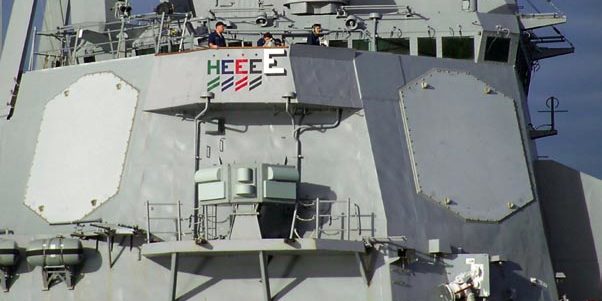@Jura For a C or S band radar to be of any utility, you will need massive antenna such as the type typically mounted on ships. Even on ships you will find some form of complimentary illuminator or X band radar acting as fire control. For our purpose, the issue of whether C band can act as an acquisition radar is rather irrelevant because the C band radar you are referring to are ship based and not on a 8X8 truck as with the S-400. In other words, it is an apples vs oranges discussion.
In the context of the S-400 discussions viz a viz the F-35, we need to cycle back to the underlying sensor net of the S-400. The selling point of the S-400 is that its sensor net is a network of 3 frequency band radars viz, VHF, L, and C/X. Conceptually each band radar acts as mutually supporting sensor in the network by feeding cueing data when appropriate to the next band radar. Nevertheless such an arrangement does not detract from my initial point in that it is sensor centric and accordingly a weakness in its kill chain. Its C/X band radar would be a priority target in any SEAD/DEAD tasking package.
That said, I would now want to focus specifically on the issue of threat emission detection and geolocation and why the F-35 is such a threat to the S-400. Based on some of the issues raised, I think there is a general lack of understanding of what transpires in EW and SEAD between a 4th gen platform and a 5th like the F-35/F-22.
For sake of simplicity, an EW suite in any modern airborne fighter comprises of three components, i.e.
(1)Passive sensor - RWR for RF threat detection;
(2)ESM - classification and prioritization of RF threats based on waveform; and
(3)Jammer - defensive response to RF threats either automatically, semi automatically or manually .
For example, the EW suite of the F-18E is made up of :
(a)ALR-67(V) 3 - RWR.
(b)ASQ-218 - ESM.
(c)ALQ-214 (V) 5 - Jammer
(d)APG-79 which is the radar but can also at as a jammer; and
(e)ALE-55 - Fibre Optic Towed Decoy (FOTD)
Here is the thing. If you want to take out a sensor (emitter) you must be able to locate it with sufficient targeting accuracy and that is not a simple thing. As I said previously, earlier RWRs could not even provide range and bearing accuracy was within 10 degrees. ALR-67(V) 3 was a major improvement that provided range information and bearing accuracy to within 1 degree. However that is still insufficient and for purposes like SEAD, triangulation data (geolocation) is needed and that means a three ship formation is required to fuse those data.
For example taking the Growler situation :
I am using the Growler example because the F-18 in its present Block II configuration cannot fuse information to the level of fidelity and accuracy until Block III when it is upgraded with DTP-N and TTNT (as in the Growler). DTP-N provides processing power for the logarithm based calculations and TTNT is to provide the bandwidth throughput needed to ensure nil latency in fusing the data. Such capabilities come with risk using 4th gen platforms. In a dense environment, communications can be disrupted or degraded and the quality of the fused data compromised. A three ship formation to conduct triangulation put more assets at risk. In contrast, a single F-35 or F-22 can deliver the same results of geolocating a threat.
If it is not obvious, the F-16CJs are specialised SEAD aircrafts.
Top end capabilities do not come cheap.





